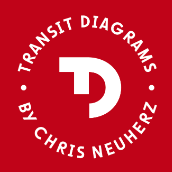
Boldlinedesign
-
Posts
478 -
Joined
-
Last visited
Reputation Activity
-
 Boldlinedesign reacted to Robert Hansford in Idea for a new tool - the Cyclic Brush Tool
Boldlinedesign reacted to Robert Hansford in Idea for a new tool - the Cyclic Brush Tool
Hey guys! I hope all is well. I've had this idea for a while now, and today I finally had a minute to sit down and mock it up really fast. It's a simple idea.
rob's cycle brush idea - Made with Clipchamp.mp4 -
 Boldlinedesign reacted to Petar Petrenko in Too quiet …
Boldlinedesign reacted to Petar Petrenko in Too quiet …
That's because Affinity decided not to communicate with us -- ordinary mortals. I don't know why they don't try to be communicative as VectorStyler developer? All users are informed about new updates/upgrades (roadmap), he answers on all questions...
-
 Boldlinedesign reacted to Dazmondo77 in Great way to complement Affinity = Clipstudio Paint 4
Boldlinedesign reacted to Dazmondo77 in Great way to complement Affinity = Clipstudio Paint 4
I used to go mad and spend hours on node cleanup, but as the years have rolled by, I'm far less fussy as I've not seen a problem caused by trying to RIP a node heavy job in 25 years, and that particular job was ridiculous, it was a client supplied .WMF file which was the culprit, and all curves made up of lots of little straight lines on a really busy vector design.
I've just received a T-shirt from the client featuring the above artwork, they had T-shirts, stickers, badges, Base Drum skin and a 15 foot long backdrop - no problems - the T-shirt was originally set-up for screen print, but it looks to me like it's DTF, prob the best DTF job I've seen so far, almost screen print bonding to the fabric.
-
 Boldlinedesign got a reaction from R C-R in Great way to complement Affinity = Clipstudio Paint 4
Boldlinedesign got a reaction from R C-R in Great way to complement Affinity = Clipstudio Paint 4
How much time are you spending on line clean up after running it through the vector trace? Even when I use high resolution and use an anti-aliasing brush, I still find I have to go in and clean up a lot of the pen work. or perhaps I have way too much of a desire for "perfect" strokes
-
 Boldlinedesign reacted to Dazmondo77 in Great way to complement Affinity = Clipstudio Paint 4
Boldlinedesign reacted to Dazmondo77 in Great way to complement Affinity = Clipstudio Paint 4
I occasionally do comic style art, the bulk of which is done in Publisher (studioLink) but my goto for creating most of the line work and halftones was Clipstudio paint 1 (which I Vectorise using Image Vectorizer -image-vectorizer.com) but just thought I'd share the 60% discount offer that's on at the moment for version 4, the upgrade to CSP 4 perpetual only cost me £16.80 -- well worth it and some great features including PUPPET WARP (worth it just for this) which I'd say is better than photoshop version = a great complement to Affinity along with VectorStyler for a lot of missing features
https://www.clipstudio.net/en/
-
 Boldlinedesign reacted to R C-R in Discussion on Affinity development (split from 2.6.3 announcement)
Boldlinedesign reacted to R C-R in Discussion on Affinity development (split from 2.6.3 announcement)
??? Do you have any examples of anybody other than VS end users doing this?
-
 Boldlinedesign reacted to transitdiagrams in Discussion on Affinity development (split from 2.6.3 announcement)
Boldlinedesign reacted to transitdiagrams in Discussion on Affinity development (split from 2.6.3 announcement)
@Boldlinedesign exactly my approach. Affinity is great and I have based my workflow around these apps but I need additional apps with functionalities Affinity doesn’t have like Acrobat and sometimes Inkscape and maybe in future VS. It is an addition and not a substitution for me 🙂
-
 Boldlinedesign got a reaction from R C-R in Discussion on Affinity development (split from 2.6.3 announcement)
Boldlinedesign got a reaction from R C-R in Discussion on Affinity development (split from 2.6.3 announcement)
@transitdiagrams No one here is speaking on behalf of VectorStyler (VS) in any official capacity. As Walt mentioned, we’re simply enthusiastic users sharing our experience because VS fills in many gaps that still exist in Affinity Designer.
I’m not a VS purist; I’ve supported Affinity for over a decade and still want it to grow. I genuinely like the software and believe artists should have more viable options beyond Adobe. For years, I invested time learning Affinity Designer and trying to make it work for my daily needs. But progress on essential features was slow, developer feedback was rare, and promised updates were repeatedly delayed or dropped altogether. Some core features are still missing even after all this time.
It was actually someone on the Affinity forum who suggested trying VS, and I’m grateful they did. It delivered nearly everything I was missing and allowed me to avoid returning to Adobe. I now try to do the same for others who feel stuck; offering VS as a potential solution, not as a replacement or competitor, but as a complement to Affinity. For example, I still regularly use Affinity Photo in place of Photoshop.
There's no reason we shouldn't discuss alternative tools on this forum, as long as it’s done respectfully. Most creative forums welcome such conversations. Affinity users are often looking for workarounds or tools that address their current limitations, and it's fair to mention options like VS when they genuinely help. I've never told anyone to abandon Affinity; only to consider what else might help them work better.
-
 Boldlinedesign got a reaction from retrograde in Discussion on Affinity development (split from 2.6.3 announcement)
Boldlinedesign got a reaction from retrograde in Discussion on Affinity development (split from 2.6.3 announcement)
@transitdiagrams No one here is speaking on behalf of VectorStyler (VS) in any official capacity. As Walt mentioned, we’re simply enthusiastic users sharing our experience because VS fills in many gaps that still exist in Affinity Designer.
I’m not a VS purist; I’ve supported Affinity for over a decade and still want it to grow. I genuinely like the software and believe artists should have more viable options beyond Adobe. For years, I invested time learning Affinity Designer and trying to make it work for my daily needs. But progress on essential features was slow, developer feedback was rare, and promised updates were repeatedly delayed or dropped altogether. Some core features are still missing even after all this time.
It was actually someone on the Affinity forum who suggested trying VS, and I’m grateful they did. It delivered nearly everything I was missing and allowed me to avoid returning to Adobe. I now try to do the same for others who feel stuck; offering VS as a potential solution, not as a replacement or competitor, but as a complement to Affinity. For example, I still regularly use Affinity Photo in place of Photoshop.
There's no reason we shouldn't discuss alternative tools on this forum, as long as it’s done respectfully. Most creative forums welcome such conversations. Affinity users are often looking for workarounds or tools that address their current limitations, and it's fair to mention options like VS when they genuinely help. I've never told anyone to abandon Affinity; only to consider what else might help them work better.
-
 Boldlinedesign got a reaction from transitdiagrams in Discussion on Affinity development (split from 2.6.3 announcement)
Boldlinedesign got a reaction from transitdiagrams in Discussion on Affinity development (split from 2.6.3 announcement)
@transitdiagrams No one here is speaking on behalf of VectorStyler (VS) in any official capacity. As Walt mentioned, we’re simply enthusiastic users sharing our experience because VS fills in many gaps that still exist in Affinity Designer.
I’m not a VS purist; I’ve supported Affinity for over a decade and still want it to grow. I genuinely like the software and believe artists should have more viable options beyond Adobe. For years, I invested time learning Affinity Designer and trying to make it work for my daily needs. But progress on essential features was slow, developer feedback was rare, and promised updates were repeatedly delayed or dropped altogether. Some core features are still missing even after all this time.
It was actually someone on the Affinity forum who suggested trying VS, and I’m grateful they did. It delivered nearly everything I was missing and allowed me to avoid returning to Adobe. I now try to do the same for others who feel stuck; offering VS as a potential solution, not as a replacement or competitor, but as a complement to Affinity. For example, I still regularly use Affinity Photo in place of Photoshop.
There's no reason we shouldn't discuss alternative tools on this forum, as long as it’s done respectfully. Most creative forums welcome such conversations. Affinity users are often looking for workarounds or tools that address their current limitations, and it's fair to mention options like VS when they genuinely help. I've never told anyone to abandon Affinity; only to consider what else might help them work better.
-
 Boldlinedesign got a reaction from Westerwälder in Discussion on Affinity development (split from 2.6.3 announcement)
Boldlinedesign got a reaction from Westerwälder in Discussion on Affinity development (split from 2.6.3 announcement)
@transitdiagrams No one here is speaking on behalf of VectorStyler (VS) in any official capacity. As Walt mentioned, we’re simply enthusiastic users sharing our experience because VS fills in many gaps that still exist in Affinity Designer.
I’m not a VS purist; I’ve supported Affinity for over a decade and still want it to grow. I genuinely like the software and believe artists should have more viable options beyond Adobe. For years, I invested time learning Affinity Designer and trying to make it work for my daily needs. But progress on essential features was slow, developer feedback was rare, and promised updates were repeatedly delayed or dropped altogether. Some core features are still missing even after all this time.
It was actually someone on the Affinity forum who suggested trying VS, and I’m grateful they did. It delivered nearly everything I was missing and allowed me to avoid returning to Adobe. I now try to do the same for others who feel stuck; offering VS as a potential solution, not as a replacement or competitor, but as a complement to Affinity. For example, I still regularly use Affinity Photo in place of Photoshop.
There's no reason we shouldn't discuss alternative tools on this forum, as long as it’s done respectfully. Most creative forums welcome such conversations. Affinity users are often looking for workarounds or tools that address their current limitations, and it's fair to mention options like VS when they genuinely help. I've never told anyone to abandon Affinity; only to consider what else might help them work better.
-
 Boldlinedesign reacted to transitdiagrams in Discussion on Affinity development (split from 2.6.3 announcement)
Boldlinedesign reacted to transitdiagrams in Discussion on Affinity development (split from 2.6.3 announcement)
Thanks to the Affinity Forum I got pointed to VS. 🙂
I am trying to get used to VS (designing) and maybe use it together with Publisher (layout) and Acrobat (for prepress stage). Designer would be Backup and for already existing projects.
Btw would there be a good prepress stage Acrobat like alternative?
Any experience in working with this kind of combination?
Chris
-
 Boldlinedesign reacted to Petar Petrenko in Too quiet …
Boldlinedesign reacted to Petar Petrenko in Too quiet …
I don't like this silence either. How busy must they have been to not write a word?
So what about the VectorStyler developer? He has to add new features, fix bugs every week, and yet he has time to respond to every email he receives.
-
 Boldlinedesign got a reaction from GRAFKOM in Discussion on Affinity development (split from 2.6.3 announcement)
Boldlinedesign got a reaction from GRAFKOM in Discussion on Affinity development (split from 2.6.3 announcement)
@Bound by Beans
VectorStyler is what I hoped Affinity Designer would become.
I still support Affinity and want to see it succeed, but after years of waiting, the reality is clear: the pace of updates is glacial, communication is vague, and critical features are still missing. I gave it a fair shot, but it just couldn't handle full-time professional work. That’s when I discovered VectorStyler early in its beta phase. It had bugs. It had gaps. It wasn’t ready. But even then, it was obvious this tool had something Affinity never quite had: a bold, focused vision, and a developer who clearly knew what pro users actually needed.
That developer, the one person behind it all is exactly why VectorStyler is different in the best way. There’s no corporate bloat. No board meetings. No marketing teams watering things down. The app evolves fast. Bugs? Often fixed within days. Try getting that kind of responsiveness from Adobe or even Serif. You won’t.
I made the full switch to VectorStyler in 2021 and haven’t looked back. Sure, there are occasional bugs. But most workdays are completely smooth, and more importantly, the issues that do come up don’t block me from getting work done. The developer’s priorities are totally clear: fix problems first, then push forward with new and improved features. Weekly updates roll out with stability improvements, while deeper features continue to evolve behind the scenes. It’s a high-maintenance program built for high-performance users.
And let’s talk features. VectorStyler isn’t just “keeping up” because in many areas, it’s ahead of both Affinity and Illustrator. Advanced brushes, live effects, pattern fills, variable strokes, precise shape tools, etc. it’s all there. Some of these tools don’t even exist in Illustrator, or if they do, they’re locked behind expensive plugins. VectorStyler is a powerhouse, especially for users who want control, flexibility, and creative range without waiting for years of half-measured updates.
Yes, it's one person building it, but that’s not a weakness to me. it’s the reason it works. Requests don’t vanish into a void. They often show up in the next update. That creates real trust between the developer and the users. It’s not just software, it’s a relationship. One built on actual listening, not PR spin.
I understand why big businesses may hesitate. Large teams don’t like risk. But that’s exactly where smaller creative studios and freelancers have the edge. We can move fast. We can take smart risks. And right now, VectorStyler is a smart risk. It’s not a subscription, updated constantly, and evolving toward something truly special. For those who outgrew Affinity and won’t touch Adobe’s pricing, VectorStyler fills that gap and then some. Some folks may even pair it with Affinity to get the best of both.
You said you’re thinking of giving up on VectorStyler after using it for years. But if it’s that impressive, if bugs really do get fixed quickly, and if you do see the momentum then what’s the reason to quit now? Most of the “new” bugs are really just the result of unexplored depth. It’s not flaky code it’s uncharted territory in a massive, feature-rich system built by one dedicated developer.
We all talk about the risk of one-man software. But Affinity, backed by a whole company, just got sold to Canva without warning. The irony? That felt like a bigger rug-pull than anything I’ve seen with VectorStyler. I used Macromedia until Adobe bought them. Then I used Adobe until they went subscription-only. Then I invested in Affinity until it became clear they weren’t serious about catching up. With the Canva buyout, a subscription plan unfortunately seems inevitable.
That’s why I bet on VectorStyler. It gives me the tools I need today. It’s updated weekly. It’s independent. And if, one day, the developer can’t continue? Then I pivot. But I’d rather invest in bold software that moves fast, listens, and grows than sit back, waiting for safe, stagnant tools to catch up.
Every major tool started small. Every game-changer looked risky at first. If the community shows up—contributing feedback, tutorials, support, etc. VectorStyler can absolutely carve out a niche not as a clone, but as a modern, pro-grade alternative made by people who actually use it. That’s what makes it worth backing.
Not because it’s perfect. But because it’s possible.
-
 Boldlinedesign reacted to mehmettuz in I really can't expand the brushes? That's ridiculous!
Boldlinedesign reacted to mehmettuz in I really can't expand the brushes? That's ridiculous!
@GarryP My friend, unfortunately, I still cannot accept this situation. @Ldina Thanks for your advice, I'll try as soon as possible.
-
 Boldlinedesign reacted to mehmettuz in I really can't expand the brushes? That's ridiculous!
Boldlinedesign reacted to mehmettuz in I really can't expand the brushes? That's ridiculous!
I absolutely agree with you mate.
-
 Boldlinedesign reacted to Ldina in I really can't expand the brushes? That's ridiculous!
Boldlinedesign reacted to Ldina in I really can't expand the brushes? That's ridiculous!
I agree, but don't hold your breath!
It is vector based, but certainly not all vectors. It's great for workflows that mix a lot of vector and pixel elements (which I do all the time). If you need 100% vectors, you'll need to use the round brush, vector shapes, etc. If your workflow requires all your brushes to be pure vector, you'll need to use another program, such as VectorStyler.
-
 Boldlinedesign reacted to Ldina in I really can't expand the brushes? That's ridiculous!
Boldlinedesign reacted to Ldina in I really can't expand the brushes? That's ridiculous!
@mehmettuz In Affinity, there is only one true vector brush/stroke...the standard round stroke. That can be expanded, whether it is the same width throughout, or uses pressure settings to vary the width.
All the other brushes are pixel based images (generated from PNG images) that follow along a vector path, so they are not fully vector. You can alter the path and path width, and the brush stroke will adjust accordingly, but I don't believe you can expand the actual stroke, since it is made up of pixels, not vectors.
-
 Boldlinedesign got a reaction from WKansepa in Discussion on Affinity development (split from 2.6.3 announcement)
Boldlinedesign got a reaction from WKansepa in Discussion on Affinity development (split from 2.6.3 announcement)
@Chills
Yes, a single developer can be a risk, but so can a bloated company. Big teams aren't immune to shutdowns, acquisitions, bad management, or direction changes. Just look at what happened with Affinity after the Canva buyout. Users who depended on it had zero control and no warning. Meanwhile, a focused solo developer can actually be more reliable in the short-to-mid term because there's no board to satisfy, no investor demands, and no random pivots.
In VectorStyler’s case, the developer is active, responsive, transparent, and releasing updates weekly. That pace and visibility builds trust. When you can see real progress every week, that’s far more meaningful than a faceless team promising “something big” once a year. Stability isn’t about the number of people, it’s about how the work gets done, how problems are handled, and how clearly the path forward is communicated.
Many successful tools started (and some still run) as solo or very small-team efforts, especially in the creative and indie software space. Think of apps like Sublime Text, LICEcap, or even early versions of Blender and Figma. What matters is whether the developer is building in a way that’s sustainable, not whether the team size checks a box.
The community around VectorStyler is growing and that matters. Users contribute bug reports, ideas, feature feedback, and even tutorials. That engagement makes the app stronger and less reliant on one person’s knowledge. In time, if needed, things like open-sourcing, partial delegation, or community funding could step in. You can’t do that with closed, corporate software if the company folds or moves on.
The biggest danger is not in choosing a solo-developed tool, it’s in assuming big companies are safer. Adobe can raise prices. Canva can kill Affinity’s momentum. Corel can gut a product you love. You have no control over those things. The difference with VectorStyler is that the tradeoff is clear: you're getting speed, control, and attention to detail now, in exchange for the possibility of needing to adapt in the future. That’s not a failure point. That’s just how software evolves.
The idea that one developer = one point of failure is only half the picture. What you should ask instead is: how stable is the tool right now, and how responsive is the person behind it? Because in practice, many “safe” tools have already failed their users in much bigger ways.
Vectorstyler does indeed have a roadmap they are using to guide their updates.
-
 Boldlinedesign got a reaction from WKansepa in Discussion on Affinity development (split from 2.6.3 announcement)
Boldlinedesign got a reaction from WKansepa in Discussion on Affinity development (split from 2.6.3 announcement)
@Bound by Beans
VectorStyler is what I hoped Affinity Designer would become.
I still support Affinity and want to see it succeed, but after years of waiting, the reality is clear: the pace of updates is glacial, communication is vague, and critical features are still missing. I gave it a fair shot, but it just couldn't handle full-time professional work. That’s when I discovered VectorStyler early in its beta phase. It had bugs. It had gaps. It wasn’t ready. But even then, it was obvious this tool had something Affinity never quite had: a bold, focused vision, and a developer who clearly knew what pro users actually needed.
That developer, the one person behind it all is exactly why VectorStyler is different in the best way. There’s no corporate bloat. No board meetings. No marketing teams watering things down. The app evolves fast. Bugs? Often fixed within days. Try getting that kind of responsiveness from Adobe or even Serif. You won’t.
I made the full switch to VectorStyler in 2021 and haven’t looked back. Sure, there are occasional bugs. But most workdays are completely smooth, and more importantly, the issues that do come up don’t block me from getting work done. The developer’s priorities are totally clear: fix problems first, then push forward with new and improved features. Weekly updates roll out with stability improvements, while deeper features continue to evolve behind the scenes. It’s a high-maintenance program built for high-performance users.
And let’s talk features. VectorStyler isn’t just “keeping up” because in many areas, it’s ahead of both Affinity and Illustrator. Advanced brushes, live effects, pattern fills, variable strokes, precise shape tools, etc. it’s all there. Some of these tools don’t even exist in Illustrator, or if they do, they’re locked behind expensive plugins. VectorStyler is a powerhouse, especially for users who want control, flexibility, and creative range without waiting for years of half-measured updates.
Yes, it's one person building it, but that’s not a weakness to me. it’s the reason it works. Requests don’t vanish into a void. They often show up in the next update. That creates real trust between the developer and the users. It’s not just software, it’s a relationship. One built on actual listening, not PR spin.
I understand why big businesses may hesitate. Large teams don’t like risk. But that’s exactly where smaller creative studios and freelancers have the edge. We can move fast. We can take smart risks. And right now, VectorStyler is a smart risk. It’s not a subscription, updated constantly, and evolving toward something truly special. For those who outgrew Affinity and won’t touch Adobe’s pricing, VectorStyler fills that gap and then some. Some folks may even pair it with Affinity to get the best of both.
You said you’re thinking of giving up on VectorStyler after using it for years. But if it’s that impressive, if bugs really do get fixed quickly, and if you do see the momentum then what’s the reason to quit now? Most of the “new” bugs are really just the result of unexplored depth. It’s not flaky code it’s uncharted territory in a massive, feature-rich system built by one dedicated developer.
We all talk about the risk of one-man software. But Affinity, backed by a whole company, just got sold to Canva without warning. The irony? That felt like a bigger rug-pull than anything I’ve seen with VectorStyler. I used Macromedia until Adobe bought them. Then I used Adobe until they went subscription-only. Then I invested in Affinity until it became clear they weren’t serious about catching up. With the Canva buyout, a subscription plan unfortunately seems inevitable.
That’s why I bet on VectorStyler. It gives me the tools I need today. It’s updated weekly. It’s independent. And if, one day, the developer can’t continue? Then I pivot. But I’d rather invest in bold software that moves fast, listens, and grows than sit back, waiting for safe, stagnant tools to catch up.
Every major tool started small. Every game-changer looked risky at first. If the community shows up—contributing feedback, tutorials, support, etc. VectorStyler can absolutely carve out a niche not as a clone, but as a modern, pro-grade alternative made by people who actually use it. That’s what makes it worth backing.
Not because it’s perfect. But because it’s possible.
-
 Boldlinedesign reacted to Bound by Beans in expand stroke on line after stroke width tool unexpected results
Boldlinedesign reacted to Bound by Beans in expand stroke on line after stroke width tool unexpected results
Expand stroke in Designer results in nodes everywhere, which you can't remove without effort and risk.
Copied this ugly result to Vectorstyler. 'Simplify' in VectorStyler gives me this elegant and usable result in just one second and a single click.
This essentially makes it necessary to handle much of the vector work, if not all of it, in other applications. Perhaps it's time to recruit some vector specialists?
-
 Boldlinedesign got a reaction from mopperle in Discussion on Affinity development (split from 2.6.3 announcement)
Boldlinedesign got a reaction from mopperle in Discussion on Affinity development (split from 2.6.3 announcement)
why is that a bad sign for software? I love getting consistent weekly or monthly updates. problems and bugs get fixed asap and new features get added
-
 Boldlinedesign got a reaction from Corina77 in Discussion on Affinity development (split from 2.6.3 announcement)
Boldlinedesign got a reaction from Corina77 in Discussion on Affinity development (split from 2.6.3 announcement)
@Chills
Yes, a single developer can be a risk, but so can a bloated company. Big teams aren't immune to shutdowns, acquisitions, bad management, or direction changes. Just look at what happened with Affinity after the Canva buyout. Users who depended on it had zero control and no warning. Meanwhile, a focused solo developer can actually be more reliable in the short-to-mid term because there's no board to satisfy, no investor demands, and no random pivots.
In VectorStyler’s case, the developer is active, responsive, transparent, and releasing updates weekly. That pace and visibility builds trust. When you can see real progress every week, that’s far more meaningful than a faceless team promising “something big” once a year. Stability isn’t about the number of people, it’s about how the work gets done, how problems are handled, and how clearly the path forward is communicated.
Many successful tools started (and some still run) as solo or very small-team efforts, especially in the creative and indie software space. Think of apps like Sublime Text, LICEcap, or even early versions of Blender and Figma. What matters is whether the developer is building in a way that’s sustainable, not whether the team size checks a box.
The community around VectorStyler is growing and that matters. Users contribute bug reports, ideas, feature feedback, and even tutorials. That engagement makes the app stronger and less reliant on one person’s knowledge. In time, if needed, things like open-sourcing, partial delegation, or community funding could step in. You can’t do that with closed, corporate software if the company folds or moves on.
The biggest danger is not in choosing a solo-developed tool, it’s in assuming big companies are safer. Adobe can raise prices. Canva can kill Affinity’s momentum. Corel can gut a product you love. You have no control over those things. The difference with VectorStyler is that the tradeoff is clear: you're getting speed, control, and attention to detail now, in exchange for the possibility of needing to adapt in the future. That’s not a failure point. That’s just how software evolves.
The idea that one developer = one point of failure is only half the picture. What you should ask instead is: how stable is the tool right now, and how responsive is the person behind it? Because in practice, many “safe” tools have already failed their users in much bigger ways.
Vectorstyler does indeed have a roadmap they are using to guide their updates.
-
 Boldlinedesign got a reaction from Corina77 in Discussion on Affinity development (split from 2.6.3 announcement)
Boldlinedesign got a reaction from Corina77 in Discussion on Affinity development (split from 2.6.3 announcement)
@Bound by Beans
VectorStyler is what I hoped Affinity Designer would become.
I still support Affinity and want to see it succeed, but after years of waiting, the reality is clear: the pace of updates is glacial, communication is vague, and critical features are still missing. I gave it a fair shot, but it just couldn't handle full-time professional work. That’s when I discovered VectorStyler early in its beta phase. It had bugs. It had gaps. It wasn’t ready. But even then, it was obvious this tool had something Affinity never quite had: a bold, focused vision, and a developer who clearly knew what pro users actually needed.
That developer, the one person behind it all is exactly why VectorStyler is different in the best way. There’s no corporate bloat. No board meetings. No marketing teams watering things down. The app evolves fast. Bugs? Often fixed within days. Try getting that kind of responsiveness from Adobe or even Serif. You won’t.
I made the full switch to VectorStyler in 2021 and haven’t looked back. Sure, there are occasional bugs. But most workdays are completely smooth, and more importantly, the issues that do come up don’t block me from getting work done. The developer’s priorities are totally clear: fix problems first, then push forward with new and improved features. Weekly updates roll out with stability improvements, while deeper features continue to evolve behind the scenes. It’s a high-maintenance program built for high-performance users.
And let’s talk features. VectorStyler isn’t just “keeping up” because in many areas, it’s ahead of both Affinity and Illustrator. Advanced brushes, live effects, pattern fills, variable strokes, precise shape tools, etc. it’s all there. Some of these tools don’t even exist in Illustrator, or if they do, they’re locked behind expensive plugins. VectorStyler is a powerhouse, especially for users who want control, flexibility, and creative range without waiting for years of half-measured updates.
Yes, it's one person building it, but that’s not a weakness to me. it’s the reason it works. Requests don’t vanish into a void. They often show up in the next update. That creates real trust between the developer and the users. It’s not just software, it’s a relationship. One built on actual listening, not PR spin.
I understand why big businesses may hesitate. Large teams don’t like risk. But that’s exactly where smaller creative studios and freelancers have the edge. We can move fast. We can take smart risks. And right now, VectorStyler is a smart risk. It’s not a subscription, updated constantly, and evolving toward something truly special. For those who outgrew Affinity and won’t touch Adobe’s pricing, VectorStyler fills that gap and then some. Some folks may even pair it with Affinity to get the best of both.
You said you’re thinking of giving up on VectorStyler after using it for years. But if it’s that impressive, if bugs really do get fixed quickly, and if you do see the momentum then what’s the reason to quit now? Most of the “new” bugs are really just the result of unexplored depth. It’s not flaky code it’s uncharted territory in a massive, feature-rich system built by one dedicated developer.
We all talk about the risk of one-man software. But Affinity, backed by a whole company, just got sold to Canva without warning. The irony? That felt like a bigger rug-pull than anything I’ve seen with VectorStyler. I used Macromedia until Adobe bought them. Then I used Adobe until they went subscription-only. Then I invested in Affinity until it became clear they weren’t serious about catching up. With the Canva buyout, a subscription plan unfortunately seems inevitable.
That’s why I bet on VectorStyler. It gives me the tools I need today. It’s updated weekly. It’s independent. And if, one day, the developer can’t continue? Then I pivot. But I’d rather invest in bold software that moves fast, listens, and grows than sit back, waiting for safe, stagnant tools to catch up.
Every major tool started small. Every game-changer looked risky at first. If the community shows up—contributing feedback, tutorials, support, etc. VectorStyler can absolutely carve out a niche not as a clone, but as a modern, pro-grade alternative made by people who actually use it. That’s what makes it worth backing.
Not because it’s perfect. But because it’s possible.
-
 Boldlinedesign got a reaction from Andy05 in Discussion on Affinity development (split from 2.6.3 announcement)
Boldlinedesign got a reaction from Andy05 in Discussion on Affinity development (split from 2.6.3 announcement)
@Chills
Yes, a single developer can be a risk, but so can a bloated company. Big teams aren't immune to shutdowns, acquisitions, bad management, or direction changes. Just look at what happened with Affinity after the Canva buyout. Users who depended on it had zero control and no warning. Meanwhile, a focused solo developer can actually be more reliable in the short-to-mid term because there's no board to satisfy, no investor demands, and no random pivots.
In VectorStyler’s case, the developer is active, responsive, transparent, and releasing updates weekly. That pace and visibility builds trust. When you can see real progress every week, that’s far more meaningful than a faceless team promising “something big” once a year. Stability isn’t about the number of people, it’s about how the work gets done, how problems are handled, and how clearly the path forward is communicated.
Many successful tools started (and some still run) as solo or very small-team efforts, especially in the creative and indie software space. Think of apps like Sublime Text, LICEcap, or even early versions of Blender and Figma. What matters is whether the developer is building in a way that’s sustainable, not whether the team size checks a box.
The community around VectorStyler is growing and that matters. Users contribute bug reports, ideas, feature feedback, and even tutorials. That engagement makes the app stronger and less reliant on one person’s knowledge. In time, if needed, things like open-sourcing, partial delegation, or community funding could step in. You can’t do that with closed, corporate software if the company folds or moves on.
The biggest danger is not in choosing a solo-developed tool, it’s in assuming big companies are safer. Adobe can raise prices. Canva can kill Affinity’s momentum. Corel can gut a product you love. You have no control over those things. The difference with VectorStyler is that the tradeoff is clear: you're getting speed, control, and attention to detail now, in exchange for the possibility of needing to adapt in the future. That’s not a failure point. That’s just how software evolves.
The idea that one developer = one point of failure is only half the picture. What you should ask instead is: how stable is the tool right now, and how responsive is the person behind it? Because in practice, many “safe” tools have already failed their users in much bigger ways.
Vectorstyler does indeed have a roadmap they are using to guide their updates.






